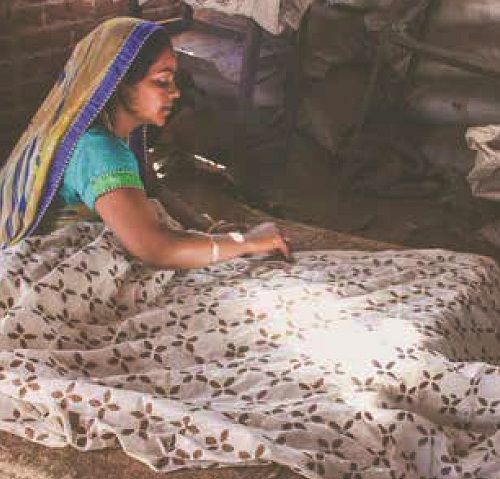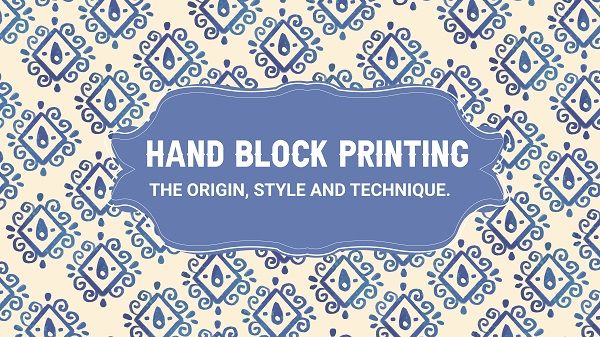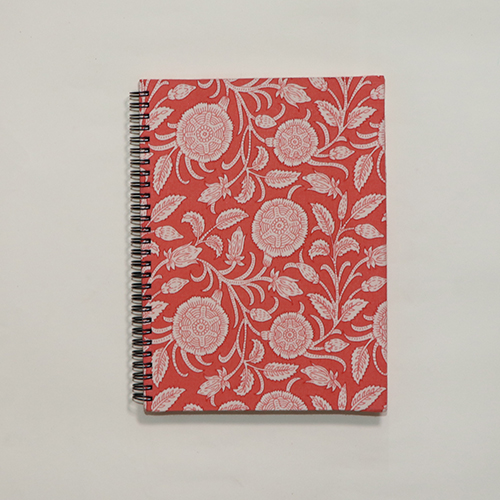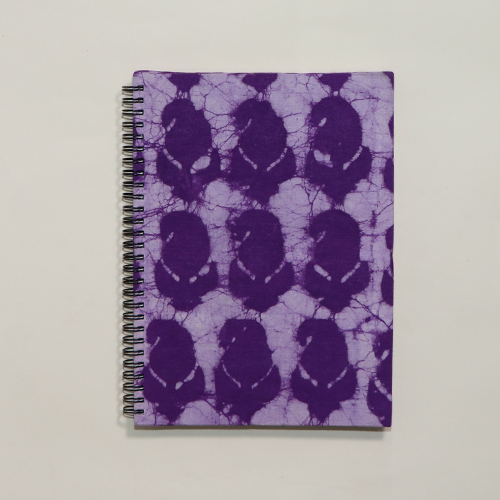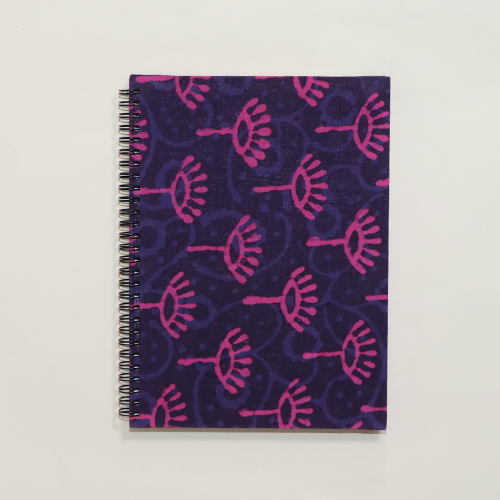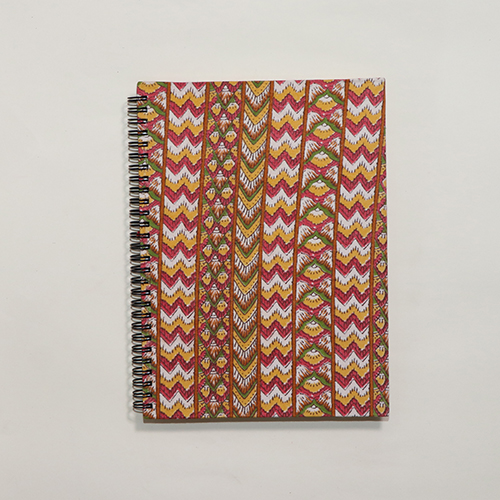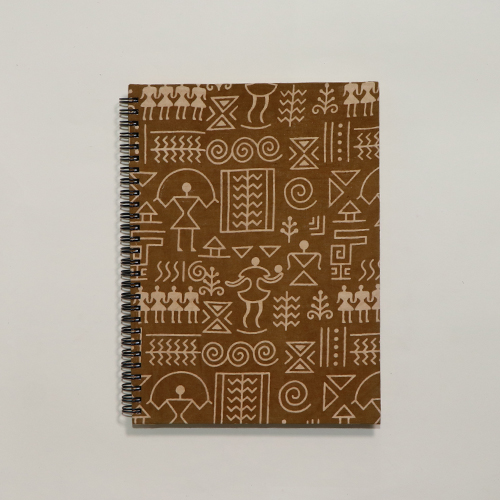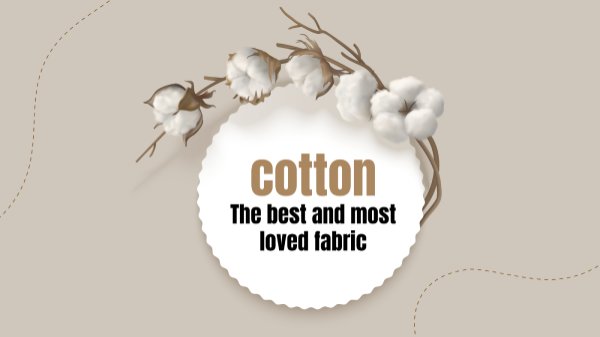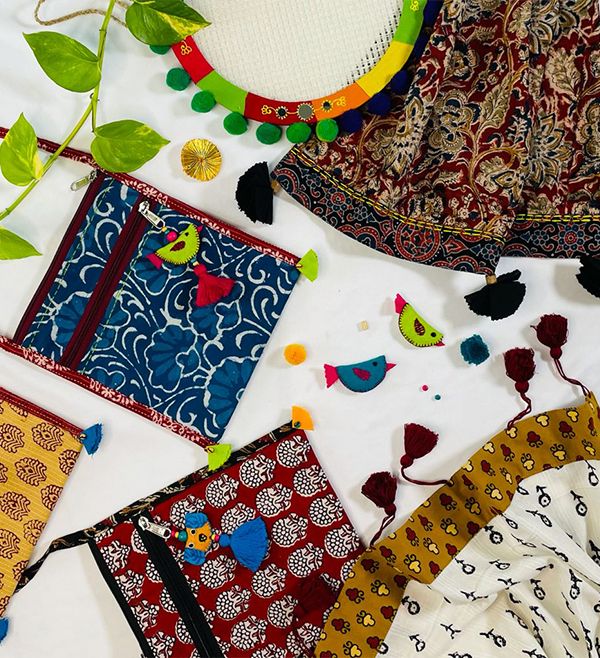India has been the epicenter of unique arts and crafts. Our history is laced in beautiful art and motifs – drawn form cultural, spiritual and traditional inspirations. Fabric has however been the legacy and the pride of India.
Fabric dying and printing has roots running through the length and breadth of our country. Some art and techniques date back to thousands of years. Let us take you in the world of one such beautiful fabric printing process – Hand block printing.
Hand block printing – a brief history
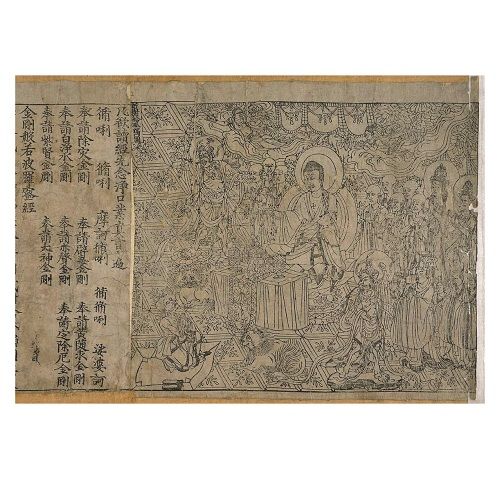
It is a beautiful ancient form of printing, that has slowly become a trend and heritage in modern India. It is first known to have originated in Rajasthan in India, some 500 years ago in Bagru. Other places like Sanganer, Ahmedabad, Pethapur, and Farukhabad also have a colorful history of hand block print origins.
The art of block printing has been cherished and kept alive by the – Chippa Community. They have passed this ancestral art with its heritage process through centuries. It is now a legacy that this community keeps safe and running across India.
This textile art is cherished all over India and also has a following across the globe!
Inspired from –
Design is the soul of the fabric. Hand block printing, that brings life to the beauty of any fabric, is inspired from age old art forms. A design compiled of many different patterns form the foundation of hand block printing design. More elaborate designs can be made through small patterns in a block print. We have the beauty of Jhal, Bel, Buta and Buti components as a part of bigger designs.
Different regions have their own unique style, texture and technique of hand block printing. In fact, fabric enthusiasts can look at the design and tell the geographical region is was designed in.
When hand block printing started in India, the tools used for printing were crude. With time though these have developed with finesse – enhancing the appeal of the finished print greatly!
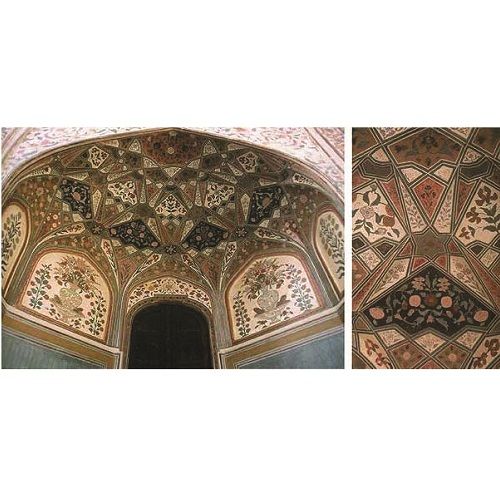
The hand block printing industry is growing and there is more to the beauty of hand block that has made it a proud trend. Let us check the different forms of hand block printing techniques in India.
The Process of Hand block printing –
-
Traditionally hand block printing is started with an artist drawing the precise and intricate motif that needs to be printed. As discussed earlier, these motifs are inspired from nature, tradition, art, culture and heritage of India.
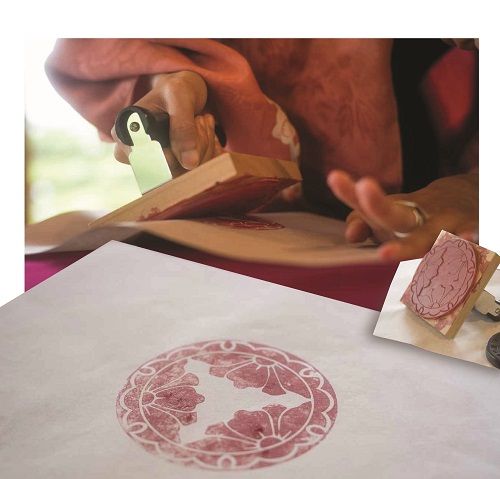
The second step is carving the motif of wooden blocks. Artists use handy tools like hammer, chisel and drills. They hand carve these designs on the block. The raised surface of the block consists of the design and the unwanted part is removed. Typically, hand carving a block (intricate design) can take up to 7 days.
-
The approximate size of the block is 18-25 centimeters in length while the thickness is 3 inches. The size will vary as per the design. For designs with multi colors, each color is carved in separate block.
-
Once carving is done, the block is submerged in mustard oil for a week. This is done to prevent any cracks in the design, considering the harsh and dry climate conditions in the regions that they are made. The artist also drills holes in the wooden block for allowing air passage. This helps in increasing the block strength and life span.
-
Next step is preparing the dye. In hand block printing colors used are natural dyes. There are few basic colors that are made and then different shades are achieved by mixing these basic shades. The most popular ones are vegetable dyes, made from natural petals, flowers, fruits, bark, leaves, spices etc.
-
Some dyes like Prussian, Ultramarine, and red ochre are made from minerals.
-
The dye is then poured inti wooden trays. The artist then begins
-
When printing, every color will be individually stamped. First the ‘Rekh’ or outline block is stamped. Then comes the ‘datta’ or fill block. It is usually the ground color block. The number of blocks used in the process depends on the number of colors in the print design.
-
Every stamp takes precision, strength and craftsmanship. The fabric is placed on the printing desk or table. It is stretched fully and pinned to the surface, by heavy placements or small pins.
-
Printing begins starting from the left or the fabric to the right.
-
The block needs to be stamped hard and perfectly inside the block carving outlines. the process is tedious and takes skill to achieve the best.
-
All of the printing is done by hand. There are minor irregularities in the print – marking the priceless human made, handmade charm to the fabric.
-
Usually, natural dyes go well with cotton, polyester, hemp, linen and bamboo fabrics. Hand block printing is done on these fabrics, to ensure fine binding of color and fabric.
-
The fabrics need to undergo prepping before they are ready for print. This ensures the final print gives a clean and fresh look,
-
Post printing the fabrics are dried in the sun.
Block Printing techniques –
There are 3 primary type of Block Printing techniques, mainly –
-
Direct printing – the fabric is first bleached, followed by dying and then printed with blocks.
-
Resist printing – the surface of the cloth that does not need dying is covered in paste of resin and clay. The fabric is then dyed in the desired color. During this stage the dye flows into the cracks – creating a wavy effect of colors on the fabric. Post this process block printing is done.
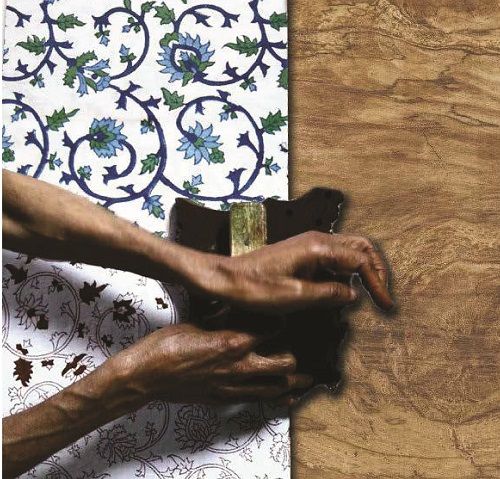
-
Discharge printing – the fabric is dyed in desired color. A chemical is used to remove the dye from the part of the fabric where printing needs to be done. These are treated again to be re-colored.
Types of Block Printing –
1. Bagh –
-
Bagh is a unique type of block printing with repetitive geometric and floral compositions. The name comes from its geographical location where it is made – Bagh village in Madhya Pradesh.
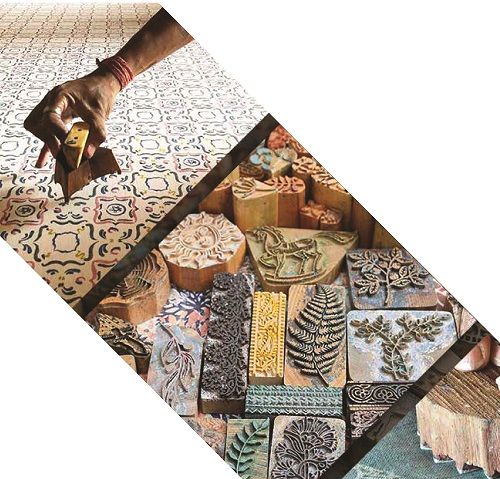
-
The process is elaborate and time consuming,
-
All colors used for dying are natural. Commonly used colors are red and black. Designs are inspired by nature and wild life. Inspirations from the Taj Mahal like floral motifs can also be seen in typical Bagh textiles.
-
Some artists who have practiced this art passed on from generations state that the blocks that they have to print, are almost 330 years old!
-
The chemical properties of the Bagh river are used to obtain classic shades unique to Bagh textiles.
2. Ajrak –
-
It is an ancient technique that first emerged in the present-day Sindh – adjoining the western regions of Gujarat and Rajasthan. This art was mastered by the civilizations around the area of Indus River.
-
It is believed the name Ajrak was derived from the Sanskrit name – ‘A-jharat’ or that which does not fade. The technique is simple resist technique, and the fabric is printed on both sides.
-
Commonly used colors in Ajrak printing are Indigo and blues.
-
The process is complicated. Traditionally Ajrak manufacturing requires 23 steps!
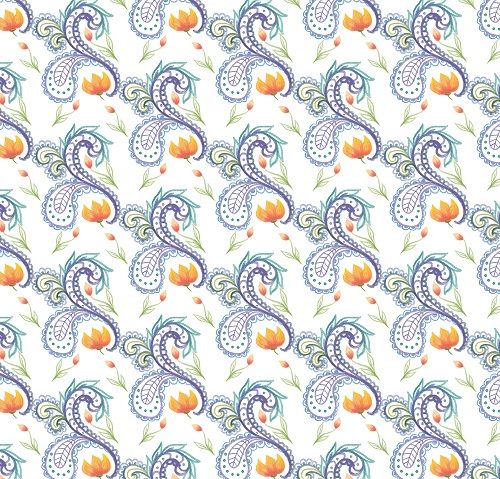
-
Motifs are geometrical and floral, also depending on the area of manufacturing and its culture.
3) Kalamkari
-
This beautiful printing style developed 3000 years ago in Andhra Pradesh and Telangana. The name has Persian roots and literally translates into – kalam – pen and kari – craftsmanship.
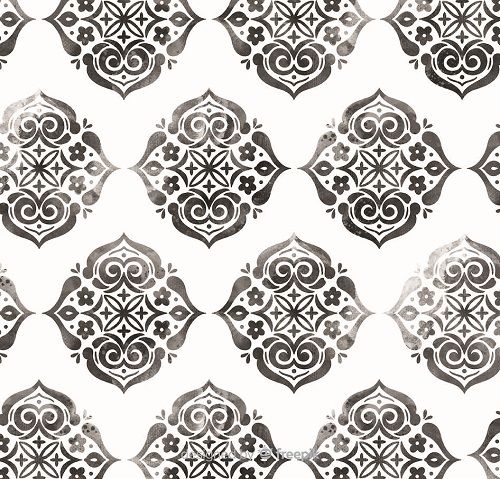
-
Motifs that make Kalamkari are divine characters from the Mahabharata, and Ramayana, peacock motifs, flowers, paisleys. In the ancient times people went from village to village telling stories. Some of them drew these on canvas, bringing to rise the classical hand block painting of Kalamkari.
-
It consists of two techniques - Srikalahasti and Machilipatnam. While Srikalahasti involves hand painting the fabric the second type – Machilipatnam is done by hand blocks.
-
This art from is also used to make panels and narrative scrolls.
-
Gorgeous kalamkari prints are made on cotton fabrics. The entire process consists of a total of 17 steps. Printing on fabric is done in three steps.
2. Sanganeri
-
This hand block printing technique originated in Sanganer in Jaipur, Rajasthan.
-
It is believed that these prints emerged when war broke among the Mughals and Marathas in the mid-17th Century. It is during this time that many craftsmen migrated to Sanganer, flourishing this art. These artisans belong to the Chippa community
-
These design prints are inspired and remind us of the beautiful landscaped gardens.
-
Design details like ornaments like jhumkas, birds, fruits, flowers and folk scenes are commonly used. Delicate patterns and lines with bright colors define this printing style.
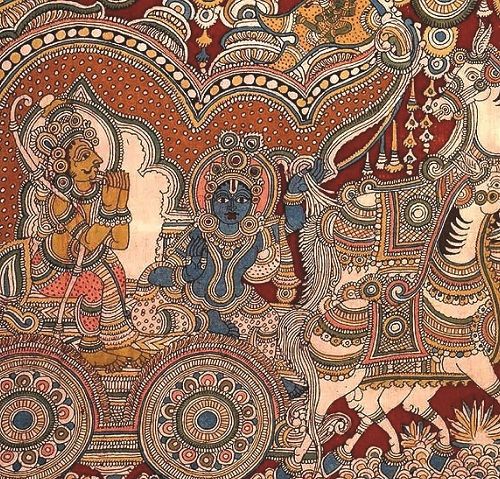
-
Royal families of Rajasthan appreciated this art and it is now widely popular.
-
The printing technique involves laying the fabric and then marking the designs, then printing it with blocks.
3. Dabu
-
Dabu is a mud-resist hand block printing technique, originated in the Rajasthan. It is a complicated process with many strenuous steps, and has survived the test of time. The practice witnessed a stop in the last century but regained and now is a popular form of block printing.
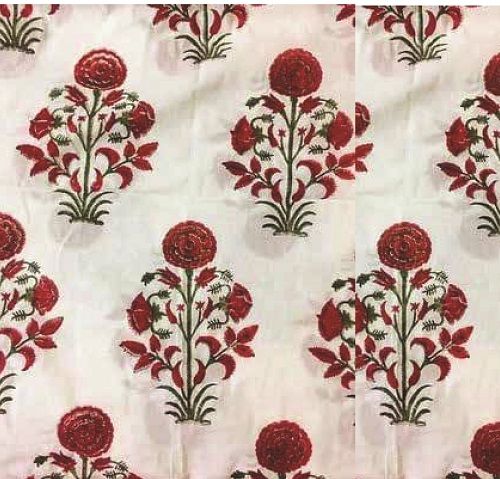
-
History states that the origin of Dabu art formed in China. It then extended in India, first in 675 AD in Akola village in Chittorgarh district.
-
It is usually distinguished with light colored designs on a dark background. Designs are mainly inspired by nature and surrounding elements. Some designs also show geometric patterns.
-
It gets the name Dabu as they use ‘dabu paste’ – ‘mud kali mitti or black clay, as the medium for resist. This paste is made from guar gum, saw dust and clay.
-
All colors used are natural and organic. Indigo is dominantly dyed in Dabu process. Most fabrics – cotton, silk, chiffon and more are printed in Dabu style.
4. Gold and Silver Dust - Khari printing
-
This style is ancient way of using zardozi to bring the sparkle of gold.
-
This is done on already printed and ready fabric, as this technique does not require permeability.
-
A paste of roghan gum and castor oil is used on two different blocks. Through perforations in these blocks the gum paste is squeezed in between, and metal dust is sprinkled on top.
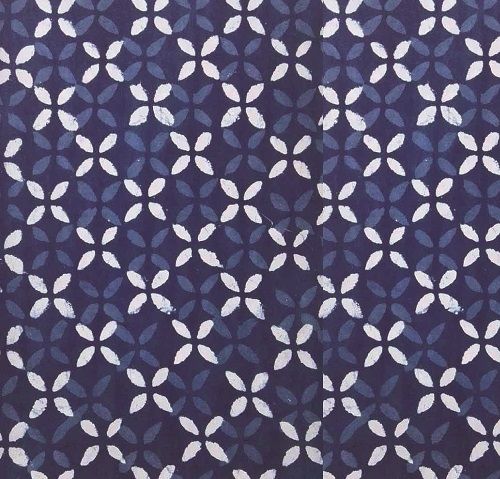
-
Traditionally dust of precious metals – like gold and silver is used. However, it has been largely substituted by more affordable metals dust like crushed mica ( chamki ).
-
A wide range of motifs can be used in this style. However, there is a limitation of using patterns fashioned as small dots and dashes only, as long and heavy motifs cause stiffness in the fabric and reduce the drapeability.
Block printing – a heritage of India
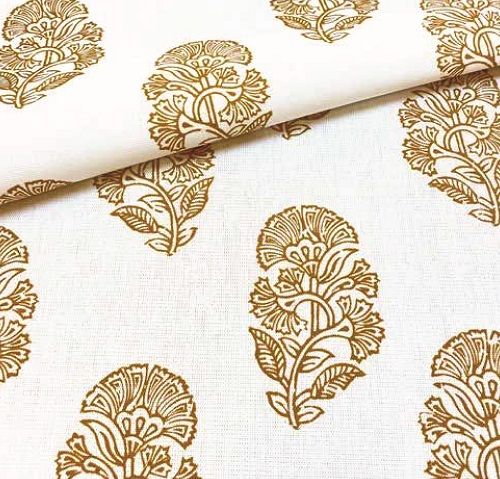
With these centuries old techniques, which are still celebrated throughout the nation and the world – Hand block printing truly stands as the heritage craft of our country.
These are making their mark in the global fashion industry, making simplicity a style statement!
Conclusion –
In the age of technology and pace, the hand block industry is a gem that still produces beautiful fabrics by hand. This alone makes hand block printing so unique. We love how these have been blended with modern takes and classy outfits. We however love that they are still rooted in centuries old style of printing!
